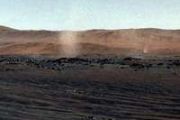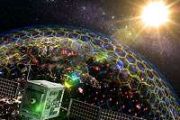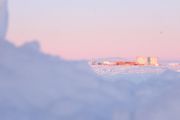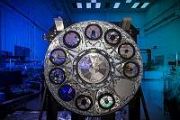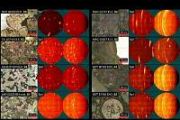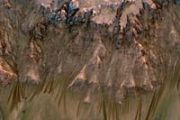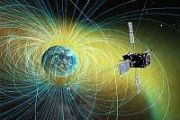
Copernical Team
Transforming nature conservation with the power of satellite imagery
 Satellite imagery is changing conservation as we know it. By being able to take an inventory of the Earth's surface and observe changes, we can begin to understand ecosystem dynamics in an unprecedented level of detail. Satellite imagery is already supplementing traditional conservation research methods, and in some cases is even replacing them. High-quality satellite images can be used to rapid
Satellite imagery is changing conservation as we know it. By being able to take an inventory of the Earth's surface and observe changes, we can begin to understand ecosystem dynamics in an unprecedented level of detail. Satellite imagery is already supplementing traditional conservation research methods, and in some cases is even replacing them. High-quality satellite images can be used to rapid Tracking changes to water, ecosystems, land surface
 Merging data from multiple satellites, OPERA can help government agencies, disaster responders, and the public access data about natural and human impacts to the land.
Where are flood waters flowing after major storms? Where are the changes in tree and plant cover after droughts, wildfires, deforestation, or mining? How much did the land move during an earthquake or volcanic eruption? Scie
Merging data from multiple satellites, OPERA can help government agencies, disaster responders, and the public access data about natural and human impacts to the land.
Where are flood waters flowing after major storms? Where are the changes in tree and plant cover after droughts, wildfires, deforestation, or mining? How much did the land move during an earthquake or volcanic eruption? Scie Teasing strange matter from the ordinary
 In a unique analysis of experimental data, nuclear physicists have made the first-ever observations of how lambda particles, so-called "strange matter," are produced by a specific process called semi-inclusive deep inelastic scattering (SIDIS). What's more, these data hint that the building blocks of protons, quarks and gluons, are capable of marching through the atomic nucleus in pairs called d
In a unique analysis of experimental data, nuclear physicists have made the first-ever observations of how lambda particles, so-called "strange matter," are produced by a specific process called semi-inclusive deep inelastic scattering (SIDIS). What's more, these data hint that the building blocks of protons, quarks and gluons, are capable of marching through the atomic nucleus in pairs called d Mars reveals liquid core as scientists measure first seismic waves
 Scientists have confirmed that Mars' core is liquid as seismic wave measurements have given valuable first-time clues about how the Red Planet was formed.
The findings, published in the Proceedings of the National Academy of Sciences, show Mars' core is a completely liquid iron-alloy core with high percentages of sulfur and oxygen, unlike Earth's core, which is a combination of a liquid
Scientists have confirmed that Mars' core is liquid as seismic wave measurements have given valuable first-time clues about how the Red Planet was formed.
The findings, published in the Proceedings of the National Academy of Sciences, show Mars' core is a completely liquid iron-alloy core with high percentages of sulfur and oxygen, unlike Earth's core, which is a combination of a liquid Fleet Space Technologies secures Australian defence space command contract
 Fleet Space Technologies, an Australian space technology company, has signed a AUD$6.4 million contract with Australia's Defence Space Command. The agreement marks the company's first foray into the defence sector and will see Fleet's next-generation Centauri satellites used to develop and demonstrate a Low Earth Orbit (LEO) satellite communications system.
The program, named ASCEND2LEO, w
Fleet Space Technologies, an Australian space technology company, has signed a AUD$6.4 million contract with Australia's Defence Space Command. The agreement marks the company's first foray into the defence sector and will see Fleet's next-generation Centauri satellites used to develop and demonstrate a Low Earth Orbit (LEO) satellite communications system.
The program, named ASCEND2LEO, w Moon shot: Japan firm to attempt historic lunar landing
 A Japanese space start-up will attempt Tuesday to become the first private company to put a lander on the Moon.
If all goes to plan, ispace's Hakuto-R Mission 1 lander will start its descent towards the lunar surface at around 1540 GMT.
It will slow its orbit some 100 kilometres above the Moon, then adjust its speed and altitude to make a "soft landing" around an hour later.
Success
A Japanese space start-up will attempt Tuesday to become the first private company to put a lander on the Moon.
If all goes to plan, ispace's Hakuto-R Mission 1 lander will start its descent towards the lunar surface at around 1540 GMT.
It will slow its orbit some 100 kilometres above the Moon, then adjust its speed and altitude to make a "soft landing" around an hour later.
Success L3Harris awarded $145M to modernize US Space Domain Awareness capabilities
UAE probe offers unprecedented view of Mars moon
 The United Arab Emirates' Hope space probe on Monday revealed Mars' smaller moon Deimos in unprecedented detail, shedding new light on the origin of the mysterious lumpy satellite.
The probe, the Arab world's first interplanetary mission, has been orbiting Mars for two years, regularly flying past Deimos and its big sibling moon Phobos.
It came within 110 kilometres (68 miles) from Deimo
The United Arab Emirates' Hope space probe on Monday revealed Mars' smaller moon Deimos in unprecedented detail, shedding new light on the origin of the mysterious lumpy satellite.
The probe, the Arab world's first interplanetary mission, has been orbiting Mars for two years, regularly flying past Deimos and its big sibling moon Phobos.
It came within 110 kilometres (68 miles) from Deimo UAE spacecraft takes close-up photos of Mars' little moon

A spacecraft around Mars has sent back the most detailed photos yet of the red planet's little moon.
The United Arab Emirates' Amal spacecraft flew within 62 miles (100 kilometers) of Deimos last month and the close-up shots were released Monday. Amal—Arabic for Hope—got a two-for-one when Mars photobombed some of the images.
Cultivating salad plants that can be grown on the Moon
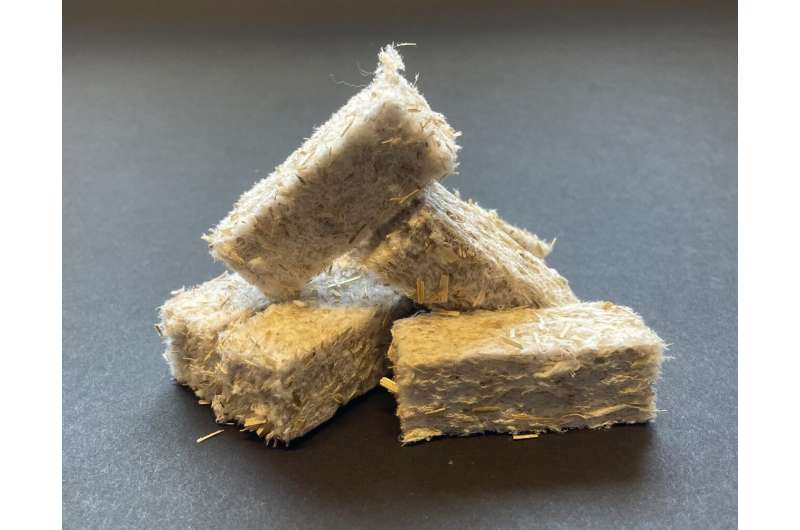
NASA has finished its planning and is ready to go. Humans will soon be returning to the Moon—this time in a manned base. But, if this project is to succeed, astronauts must be able to grow their own food. Norwegian researchers are in the process of making this possible.
The lunar "soil," or regolith as geologists call it, is essentially a powder in which it is difficult to grow plants. As if this wasn't enough, the moon is characterized by temperatures that can reach 200 degrees during the day and fall to as low as minus 183 degrees at night.
So says SINTEF researcher Galina Simonsen. However, in spite of this, Simonsen and her colleagues working as part of the international project LunarPlant, which is being headed by NTNU Social Research and the Center for Interdisciplinary Research in Space (CIRiS), believe that it will be possible to grow food plants on the moon.




